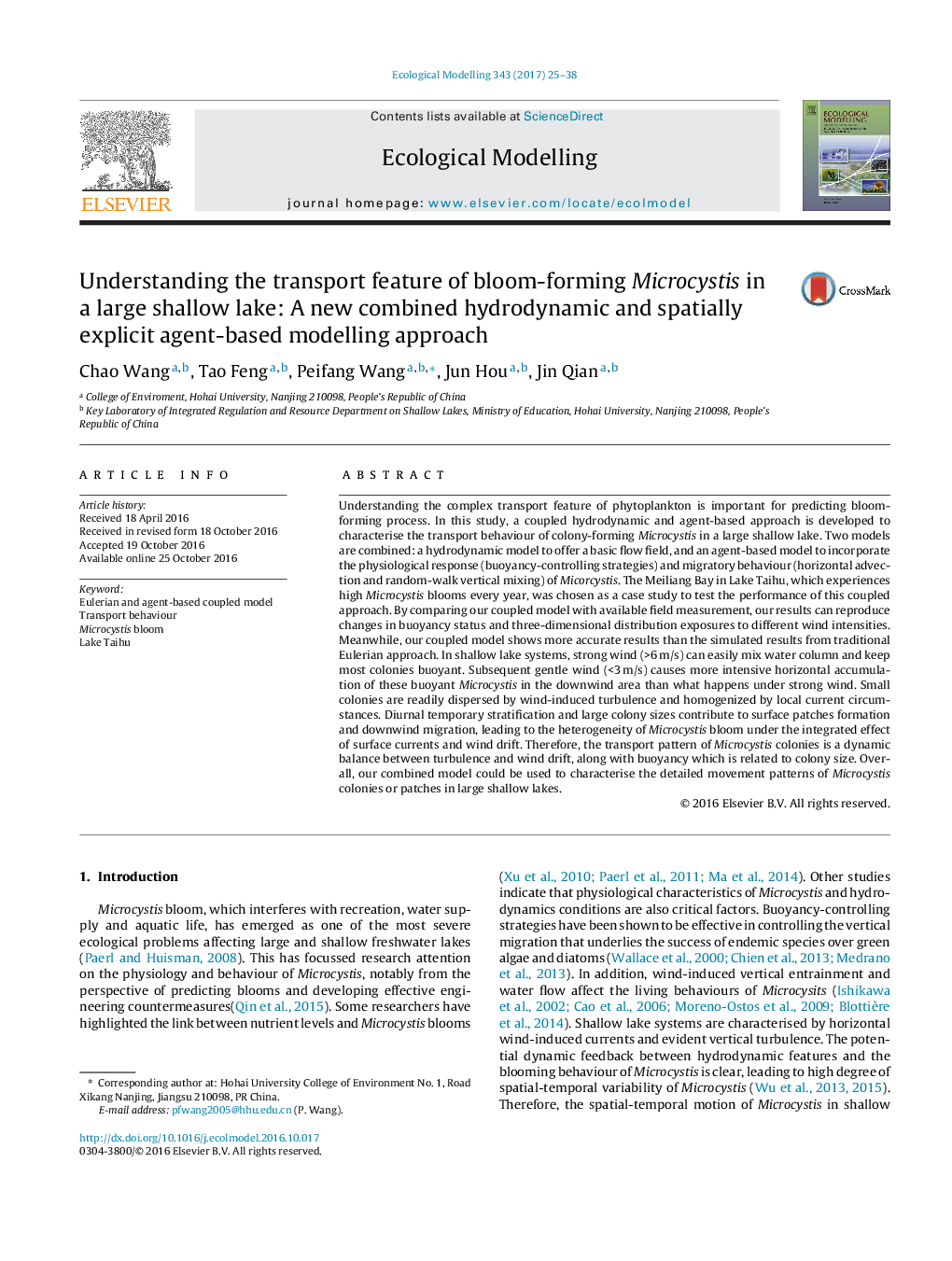| Article ID | Journal | Published Year | Pages | File Type |
|---|---|---|---|---|
| 5742300 | Ecological Modelling | 2017 | 14 Pages |
â¢Hydrodynamic and agent-based models are combined.â¢Acceptable agreements between modelled and measured results are achieved.â¢The refined transport of Microcystis with different size is elaborately described.â¢Transport pattern is a dynamic balance between turbulenc, wind drift and buoyancy.
Understanding the complex transport feature of phytoplankton is important for predicting bloom-forming process. In this study, a coupled hydrodynamic and agent-based approach is developed to characterise the transport behaviour of colony-forming Microcystis in a large shallow lake. Two models are combined: a hydrodynamic model to offer a basic flow field, and an agent-based model to incorporate the physiological response (buoyancy-controlling strategies) and migratory behaviour (horizontal advection and random-walk vertical mixing) of Micorcystis. The Meiliang Bay in Lake Taihu, which experiences high Microcystis blooms every year, was chosen as a case study to test the performance of this coupled approach. By comparing our coupled model with available field measurement, our results can reproduce changes in buoyancy status and three-dimensional distribution exposures to different wind intensities. Meanwhile, our coupled model shows more accurate results than the simulated results from traditional Eulerian approach. In shallow lake systems, strong wind (>6Â m/s) can easily mix water column and keep most colonies buoyant. Subsequent gentle wind (<3Â m/s) causes more intensive horizontal accumulation of these buoyant Microcystis in the downwind area than what happens under strong wind. Small colonies are readily dispersed by wind-induced turbulence and homogenized by local current circumstances. Diurnal temporary stratification and large colony sizes contribute to surface patches formation and downwind migration, leading to the heterogeneity of Microcystis bloom under the integrated effect of surface currents and wind drift. Therefore, the transport pattern of Microcystis colonies is a dynamic balance between turbulence and wind drift, along with buoyancy which is related to colony size. Overall, our combined model could be used to characterise the detailed movement patterns of Microcystis colonies or patches in large shallow lakes.
